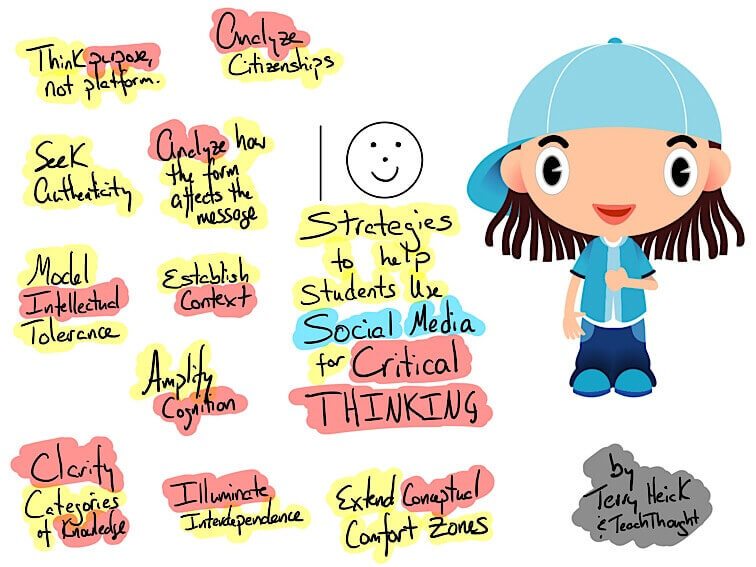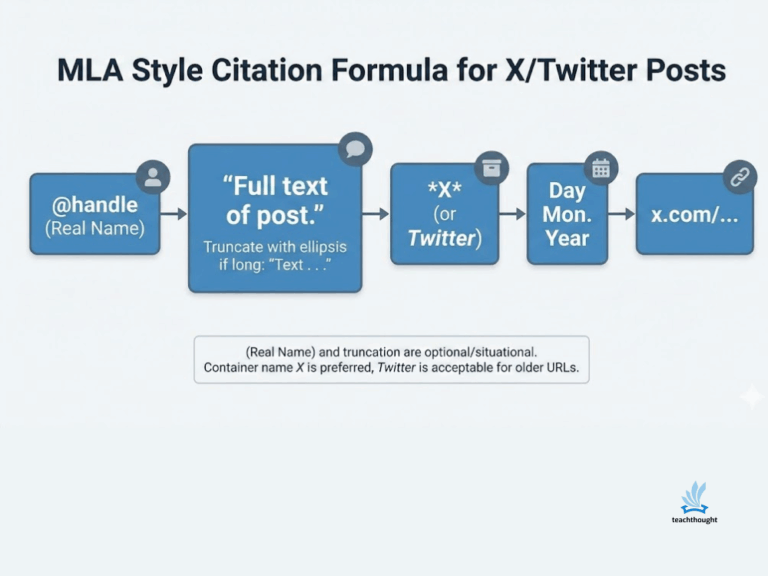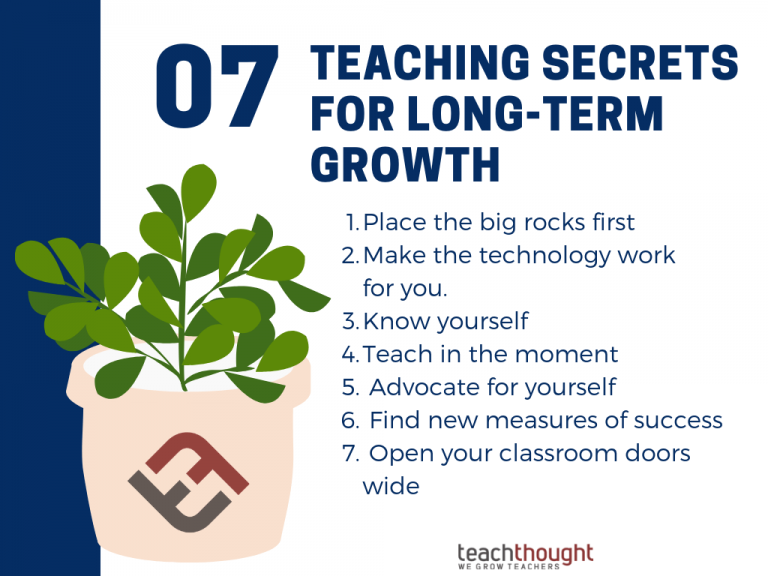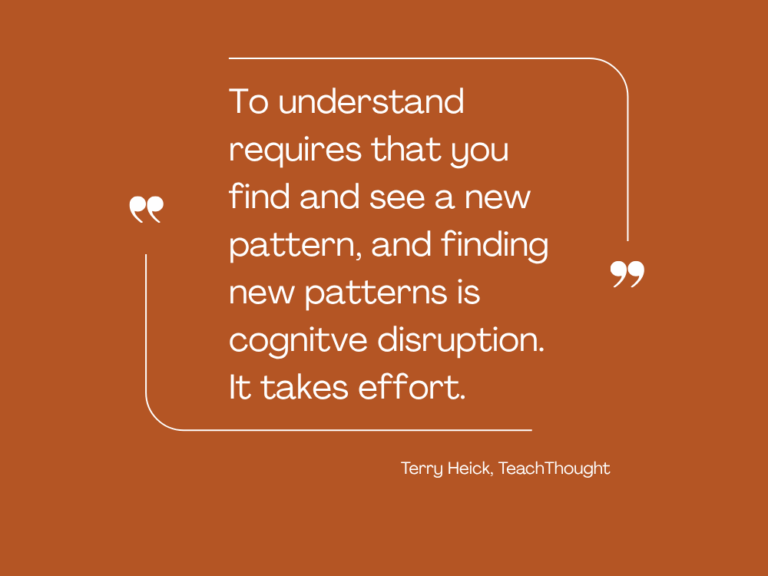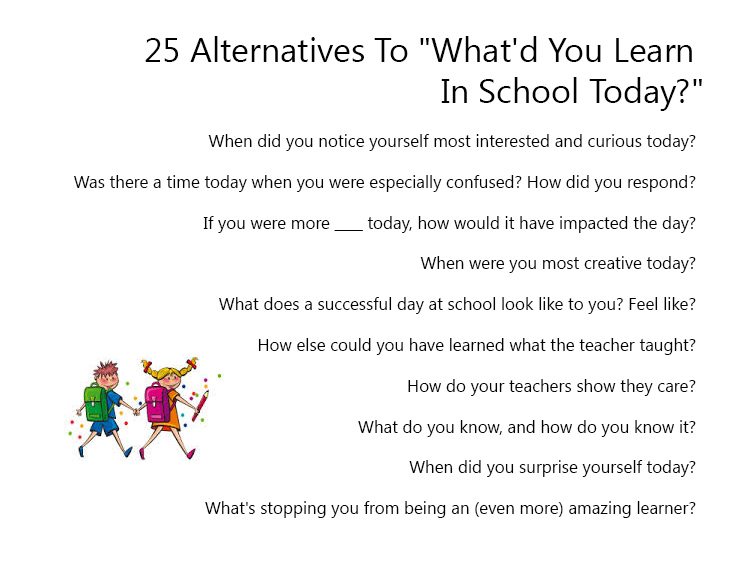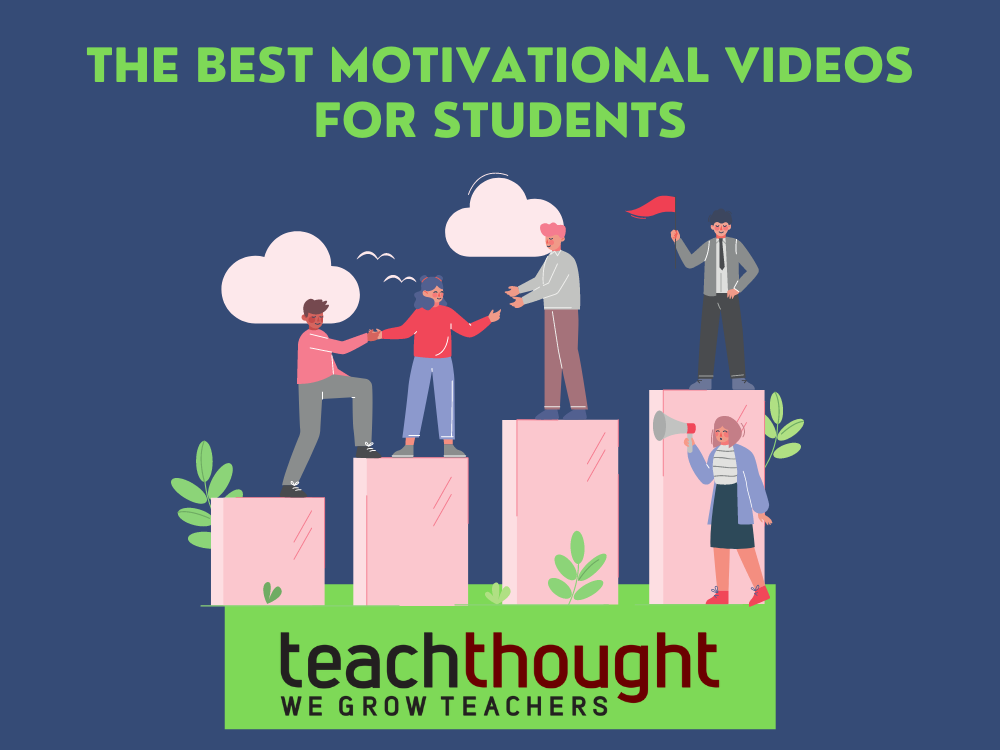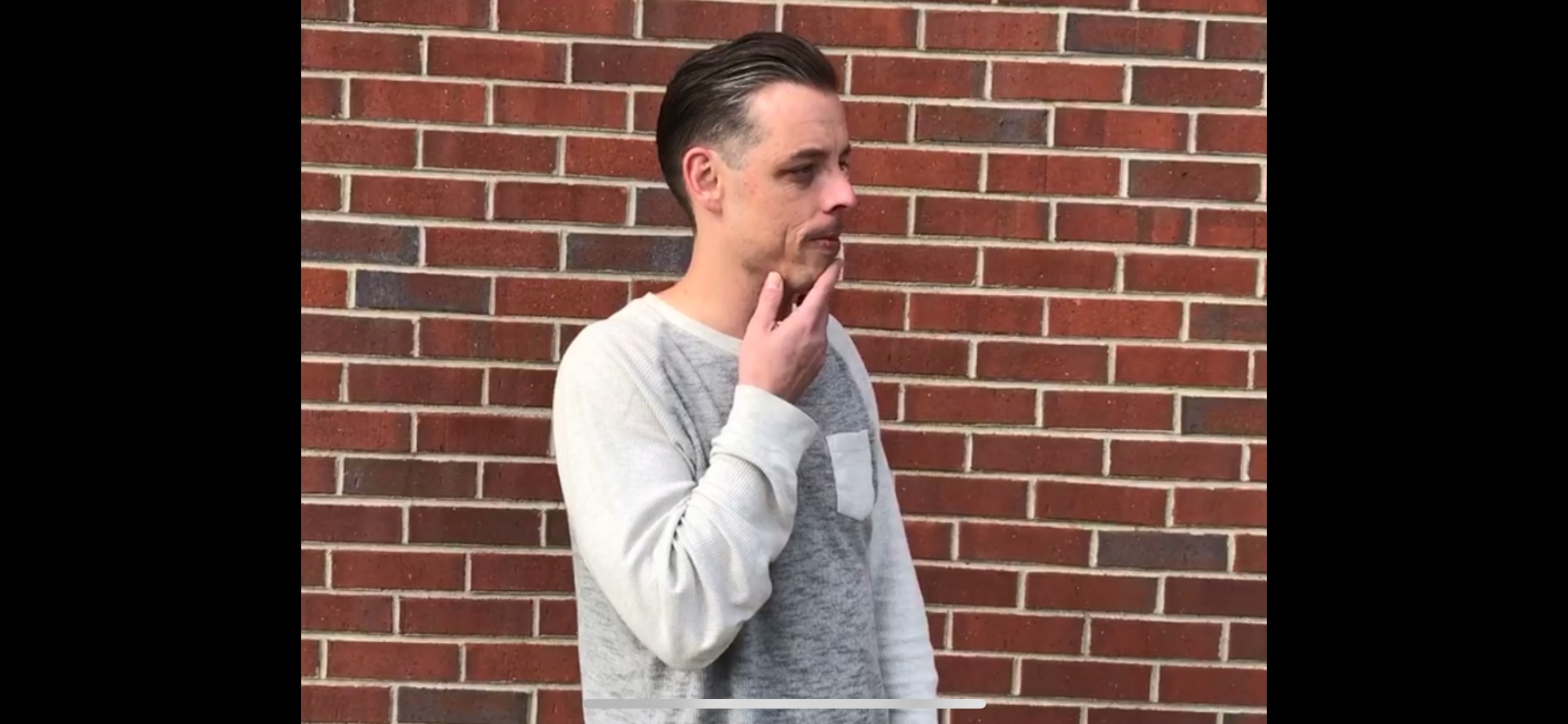
10 Strategies To Help Students Use Social Media For Critical Thinking
by Terry Heick
Social media is here to stay.
No matter how much we lament a loss of privacy, too much screen time, superficial identity, or countless other worries, media has been around since language was invented, and we have always sought to make that media as social as locally available technology would allow.
From chisels and tablets to the printing press to radio and television to twitter and Facebook, as long as we continue to have thoughts and ideas, we will continue to seek to publish and socialize them with others.
Technology & ‘Social Emotion’
It would make sense that as technology becomes more integrated, more accessible to all socioeconomic classes, and “smarter” itself, those connections will only deepen as we our priorities–and the tools we use to express them–change.
Existing learning theory says that it’s one or the other–we either connect, relate to, and belong or we devolve into selfishness, exploitation, and greed. And this isn’t a simple moral crossroads, but a matter of neurology.
Scientific American published an article discussing why being ‘connected’ matters. In the article, Matthew Lieberman discusses the idea of ‘social pain.’
‘Languages around the world use pain language to express social pain…As it turns out it is more than a metaphor – social pain is real pain.
The things that cause us to feel pain are things that are evolutionarily recognized as threats to our survival and the existence of social pain is a sign that evolution has treated social connection like a necessity, not a luxury. It also alters our motivational landscape. We tend to assume that people’s behavior is narrowly self-interested, focused on getting more material benefits for themselves and avoiding physical threats and the exertion of effort.
But because of how social pain and pleasure are wired into our operating system, these are motivational ends in and of themselves. We don’t focus on being connected solely in order to extract money and other resources from people – being connected needs no ulterior motive.’
See also ‘Stop Worrying About Screen Time’
Connecting Students
What are the implications for teachers?
For one, digital connectivity, which is already at the forefront of so much of teaching and learning has become not ‘popular’ but, for many, the standard.
Use of social media platforms like twitter, facebook, and instagram can walk a fine line, teetering back and forth between connectivity and narcissism.
More immediately for educators, it illuminates our need to create empathetic learning experiences that connect learners for deeply human purposes. The greater the dysfunction, the greater the need to belong.
So then, let’s take a look at 10 ways we can help children–students, in this case–use social media critically. Critical thinking begins with the self and extends out. Rather than fight things like ‘screen time,’ maybe we can help them use that time in more constructive ways grounded in critical thinking.
10 Strategies To Help Students Use Social Media For Critical Thinking
1. Think purpose, not platform.
Connect students through function and purpose, not technology and gadgets
2. Use social media to establish context.
Use social media to help students establish a context for themselves
3. Model intellectual tolerance.
Model for students how to relate to others who are different–that think, look, and act different than what they’re accustomed to, and how to respond to ideas different than their own.
And do so not simply from an ethical ‘be kind’ perspective, but from an intellectual one as well. A big part of intelligence is being able to learn from anything, and a big part of that is the ability to evaluate ideas without personal bias, as well as the ability to sit with an idea and analyze it without accepting or rejecting it.
4. Illuminate interdependence.
Help students clarify for themselves who and what they’re connected to–the obvious and less obvious. Encourage students to identify multiple “citizenships” they belong to, both locally and digitally and their diverse participation within each.
5. Extend conceptual comfort zones.
Use place-based education and project-based learning to help students make new connections to people, places, and ideas outside of the curriculum map
6. Clarify categories of knowledge.
Help students see knowledge in categories–academic vs recreational; creative vs industrial, fluid vs fixed, etc–and how social media emphasize, supports, or otherwise makes these available. If they can at least begin to see these categories, they can be more aware of what they’re ‘ingesting.’
7. Analyze and compare citizenship and digital citizenship.
Help students see the effects of their behavior on others, and of others’ behavior on them. Further, offer digital citizenship strategies like “THINK!” so they have a kind of framework for doing so on their own.
8. Amplify cognition.
Have a new idea? Share it with others who are interested in those kinds of ideas.
Document the ‘process’ of that idea–where it came from, how it changed, what influenced it, what you can do with it, and so on. Amplify that understand using the connected and creative abilities of social media.
9. Analyze how the form affects the message.
Perspective is a big part of social media, as is identity and idea form (video versus tweet versus images, etc.) If students can see how the form of the message affects the message itself, they can think ‘around’ and through the platform and see ideas and their roots themselves.
Have students concept map their own interdependence in a given context (home, family, hobby, neighborhood, classroom, content area, etc.)
10. Seek authenticity.
Assist students in identifying authentic roles in a community they care about.
To be ‘authentic,’ the roles should naturally exist and allow a visible void when left unfilled, providing the student with a meaningful role that matters.
